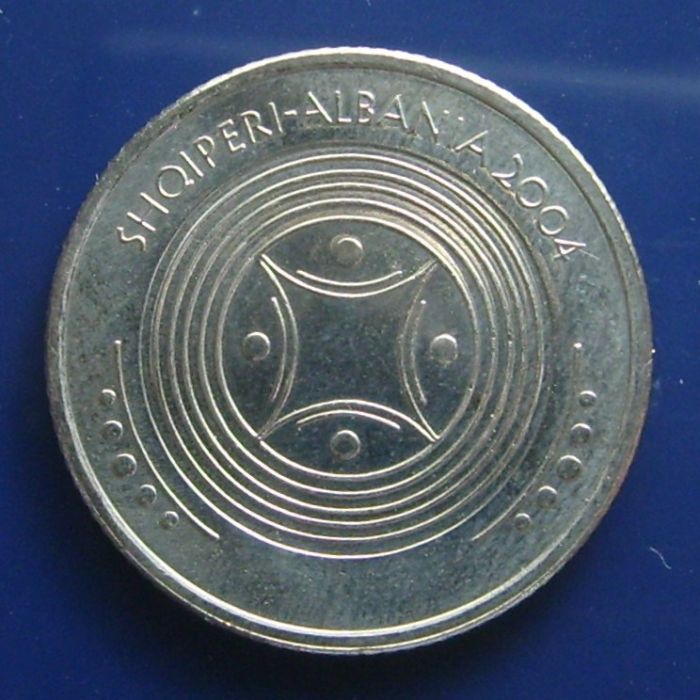Albania 50 Leke 2004 - Wheel design - unc
€5.00
In stock
SKU
al0103
al0103 Albania 50 Leke 2004 km# 90 - Wheel design - unc
| Catalog No. | km# 90 Schön# 91 N# 19907 |
|---|---|
| Send by Registered Mail | No |
| Value | 50 Leke |
| Year | 2004 |
Obverse: There is the mosaic "The Beauty of Durrës" confined with side arches, stylised floral motives, taken from this mosaic. In the coin arch there are decorative motives (symmetrical circles) taken from the Illyrian period, which harmonise with the coin centre.
Reverse: In the centre there is a decorative creation, with floral motives taken from the mosaic "The Beauty of Durrës". This figure is accompanied with circles up to the coin arch. Below the arch there is the inscription "SHQIPËRI-ALBANIA 2004".
This coin was minted by the Polish State Mint (Mennica Panstwowa SA), Poland.
The drawings of this coin were made by the painter Petraq Papa.
The mosaic "The Beauty of Durres"
This mosaic was first discovered during the works of the Austrian army for the construction of a fortification in 1916. The Austrian officer, Camillo Prashnicher, who was also a distinguished archaeologist, took care of the mosaic layer so it could be well-preserved. He was the first to publish the picture of the mosaic in one of his archaeological books for Albania and called it a figurative masterpiece of the Hellenistic art.
Later on the mosaic was covered and lost. Fortunately in 1947 the archaeologist from Durrës Vangjel Toçi rediscovered it.
The mosaic was 3.80m deep in the foundations of a house in the centre of the city. It is surrounded by a wall line and has an elliptical shape with an area of nearly 9 m2. In the centre of the mosaic there is the figure of a young and beautiful woman among flower stalks, buds and petals. It was called "The Beauty of Durrës", a conventional and metaphorical name. It dates back to the 4th century B.C. This mosaic decorated a private and luxurious restroom during this period in Durrës. The Mosaic technique is with natural pebbles in different colours stuck with each other with a great mastery according to opus - vermiculatum technique. It presents a developed art and has stylistic connections to Pela's mosaics of the same period in Macedonia. In 1982 the mosaic was moved from Durrës and was placed in the main hall of Antiquity in the National Historical Museum. The identification of the mosaic figure was first made by the archaeologist Dr. Moikom Zeqo who pointed out that the woman presented in the mosaic is the same with the one of the archetypes of the painted amphora in Apulia and South Italy, with red figures of the Hellenistic era.
According to Dr. Zeqo, this woman represents the Goddess Eylithea who assists in the babies' healthy delivery. It is the most outstanding and ancient mosaic in Albania.
Denomination: 50 Lekë
Alloy: CU75 Ni25
Weight: 5.50 gr
Diameter: 24.25 mm
Edge: serrated
Colour: white
Mintage: 200000 pcs
Year: 2004
If you want to see, the picture of the backside, just mail to: collectitcoins@outlook.com
And ask for backside; Albania 103

